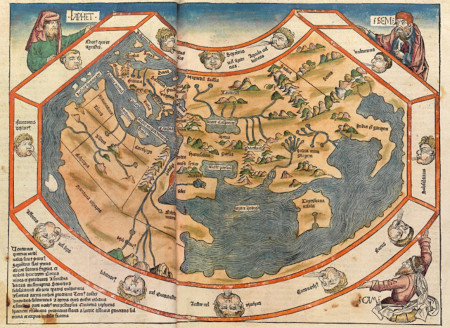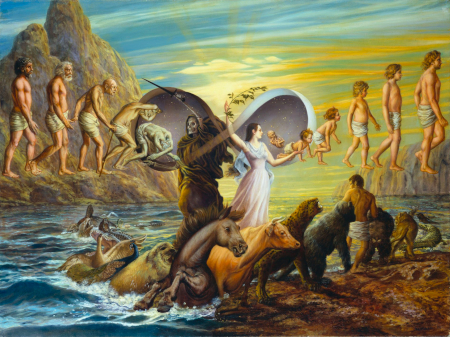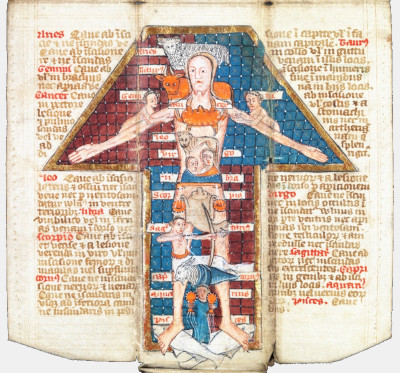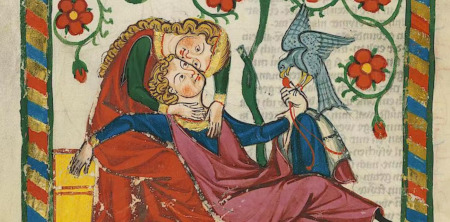Branches of Astrology
Most human civilizations, like China, Egypt, India, Mesopotamia, Maya and Inca, among others - based their culture on complex systems of astrology, which provided a link between the cosmos with the conditions and events on earth. For these, the astrological practice was not mere divination because it also served as the foundation for their spiritual culture and knowledge-systems used for practical purposes such as the calendar, like Mesoamerican calendrical shamans, and medicine like I Ching. Astrological tradition even contributed to the development of astronomy as the study of the skies provided invaluable insights about celestial bodies. For instance, the Ptolemaic astrological tradition has already listed some of the planets in the solar system and their movements.
There are over 80 branches of astrology, a number that encompasses various "schools" of practice, as well as subsets of techniques within those schools. We will check the differences between a handful of the most common types of astrology being used today.
Electional Astrology
Electional astrology, also known as event astrology, is a branch found in most traditions of astrology according to which a practitioner decides the most appropriate time for an event based on the astrological auspiciousness of that time. It differs from horary astrology because, while horary astrologers seek to find the answer to a question based on the time the question was asked, electional astrologers seek to find a period of time which will result in the most preferable outcome for an event being planned.
Historically used primarily to schedule battles, electional astrology has been used by its proponents to plan a number of events, including weddings and trips.
It's mainly used to narrow down fortuitous dates for happenings like weddings or proposals. But it can be anything.
An electional astrologers may suggest avoiding getting married during Venus retrograde, for instance. They might look at the Moon, which rules emotions, and other important orbs to find a better time to walk down the aisle.
In electional astrology, an astrologer is given an event the querent intends to plan. The astrologer then finds a date and time most auspicious for the event to take place, around which the querent bases the following plans. The method of coming to these conclusions is based on the relative positions of stars, planets and other celestial bodies at various times. Each celestial body's placement means something particular to the tradition the individual astrologer is using, in combination with the natal chart of the querent.
As with the other types of astrology, it's helpful to work with an astrologer that specializes in electional astrology. There's just so much to know.
Horary Astrology
Horary astrology is an ancient branch of horoscopic astrology and it goes back to the beginnings of astrology. Horary astrology is an ancient branch of horoscopic astrology, in short a divination tool, in which an astrologer attempts to answer a question by constructing a horoscope for the exact time at which the question was received and understood by the astrologer. The astrologer will read the chart, and give a yes or no question based on what they see. The answer to the horary question might be a simple yes or no, but is generally more complex with insights into, for example, the motives of the questioners, the motives of others involved in the matter, and the options available to them. This form of astrology is similar to tarot card readings.
Most of the time, person can get an answer based on his question - but it is also possible to get a "block" in chart. If there are blocks in the chart, sometimes it's hard to answer the question or maybe person is not supposed to know the answer. Most of the time, client will get an answer based on what his/her question is.
It's a specialized type of astrology, one that is in fact very accurate. But few astrologers currently practice it, and it's not something one can easily pick up on his/her own.
Evolutive or Karmic Astrology
Karmic astrology is a branch of astrology that delves into the concept of karma, which is the idea that actions in one's past lives can influence their current life experiences and circumstances. The term "karma" comes from Hindu and Buddhist traditions and refers to the law of cause and effect, suggesting that one's actions in previous lives shape their destiny in this life. In karmic astrology, practitioners analyze an individual's birth chart, just like in traditional astrology, but with a specific focus on identifying patterns and indicators related to past-life influences.
The North Node and South Node, also known as Rahu and Ketu in Vedic astrology, are crucial components in karmic astrology. These nodes represent points where the moon's orbit intersects with the ecliptic (apparent path of the sun). The North Node is associated with one's life path and lessons to be learned in this lifetime, while the South Node is linked to past-life experiences and tendencies. Karmic astrologers examine aspects (angular relationships) between planets and the positions of planets in houses to gain insights into karmic influences. Difficult aspects or placements may indicate unresolved issues from past lives that need attention and transformation in the current life. Retrograde planets (those appearing to move backward in the sky) are often considered in karmic astrology. Some practitioners believe that retrograde planets suggest karmic lessons or unfinished business from past lives. Patterns and themes that repeat in a person's life, such as similar relationship dynamics or challenges, are explored in karmic astrology to identify potential karmic lessons. Some karmic astrologers may recommend specific remedies or practices to help individuals work through their karmic challenges. These can include meditation, self-reflection, and other spiritual practices.
It's essential to note that karmic astrology is a spiritual and philosophical approach to astrology, and beliefs about karma and past lives may vary among individuals. While some people find karmic astrology insightful for gaining a deeper understanding of life experiences, others may approach it with skepticism. As with any astrological or spiritual practice, interpretations should be taken with an open mind and considered within a broader context.
Medical Astrology
Medical astrology, traditionally known as iatromathematics, is an ancient branch of astrology based primarily on melotesia (Greek μελοθεσία), the connection of various body parts, diseases and remedies with the nature of the Sun, Moon, planets and 12 astrological signs. Medical astrology was mentioned by Marcus Manilius (1st century AD) in his epic poem Astronomica.
Astrologers assigned signs of the zodiac to rule over parts of the body, planets to rule over organs and systems, and planets to rule over diseases and drugs. After examining the individual's birth chart, the medical astrologer can advise the client on which parts of the body are most likely to have problems. While medical astrology can give you a lot of information about your health, it's still important to consult your healthcare provider when seeking medical advice.
Modern Psychological Astrology
Modern Psychological Astrology, often referred to as psychological astrology or depth astrology, is an approach that integrates principles from traditional astrology with psychological insights, particularly influenced by the ideas of depth psychology. This branch of astrology emphasizes the exploration of the psyche, personal development, and self-awareness.
Modern Psychological Astrology draws on the work of Swiss psychiatrist Carl Jung and his concept of archetypes. Astrologers use the symbolism of the planets, signs, houses, and aspects as archetypal representations of fundamental human experiences and psychological patterns. The psychological perspective focuses on the unconscious aspects of the individual, exploring themes such as the shadow (unacknowledged or repressed aspects of the self), anima/animus (feminine/masculine aspects within each individual), and the collective unconscious. In addition to natal chart analysis, psychological astrologers pay close attention to transits (current planetary positions in relation to the natal chart) and progressions (symbolic movements of planets over time). These are interpreted in the context of personal growth, developmental phases, and potential psychological challenges. Psychological astrology often involves a client-centered approach, where the astrologer collaborates with the individual to explore their unique experiences, challenges, and potential for growth. The emphasis is on fostering self-awareness and empowerment. Some practitioners of psychological astrology may integrate therapeutic techniques into their sessions, providing a space for clients to reflect on their emotions, relationships, and life experiences. Some astrologers who specialize in psychological astrology may have backgrounds in counseling or psychotherapy, allowing them to offer a more therapeutic and supportive approach to their clients. Modern Psychological Astrology often encourages individuals to view their lives as a narrative shaped by astrological influences. Exploring the symbolism in the birth chart can help individuals understand the overarching themes and potential for personal transformation.
Modern Psychological Astrology is often seen as a more introspective and holistic approach to astrology, emphasizing the integration of astrology with psychological and spiritual growth. It has gained popularity as people seek astrology not only for predictive purposes but also as a tool for self-discovery and understanding the deeper dimensions of the self.
Mundane Astrology
Mundane astrology, also known as political astrology, is a very interesting branch of astrology. It predicts world events and affairs. This practice goes back thousands of years, since in the very beginning astrologers were not so much focused on looking at individual cards, but on the astrology of nations and kings and queens.
Mundane astrology is most often concerned with the events of geographical regions, places, countries and the whole world (unlike individual astrology). It deals with politics, the government, and the laws governing a particular nation, state or city.
The term comes from the Latin word mundus (world).

The world map, after Ptolemy's first projection, from the Nuremberg Chronicle (Die Schedelsche Weltchronik). Date 1493.
There are various approaches that involve the analysis, interpretation and forecasting of political and economic developments, historical developments and natural or man-made disasters.
For mundane astrology, you also need to be a good knower of history, because everything is related to cycles:
- Planetary cycles (including the lunar cycle and the Jupiter-Saturn cycle)
- Eclipses
- Ingresses (which occur when planets enter a new sign of the zodiac)
- Astrocartography (locational astrology)
When you research influences, you look at historical patterns. You can also look at a chart of an event that happened at a certain time and place and discuss where the planets were at that moment leading up to that particular event.
Natal Astrology
Natal astrology, also known as Genethliacal Astrology, is probably most known and wide spread type of astrology. It is an astrological system that tells about an individual's personality and life path. It is based on a natal chart that shows the placement of the main celestial bodies at the time and place of a person's birth.
In natal astrology, we look at the chart that everyone has and it is unique to each individual because no one is born in the same place at the same time. It is like a fingerprint or the iris of each individual's eye. In the natal chart we see the plan of persons life. We can see what are persons virtues, strengths, weaknesses and things like that.
In other words, natal astrology is a "deep dive into the soul" and a great tool for self-awareness. It's all about who the person is, his personality and characteristics, and what they promise for the future and how they may evolve through life.
Relationship Astrology
Relationship astrology is a form of natal astrology and specifically deals with compatibility between people. It doesn't have to be romantic and amorous, but that's certainly the most common usage. Many of you are familiar with the sun sign compatibility study, but this is only one aspect of it. While these comparisons have some value, they are very general. There are many other factors involved in evaluating the compatibility of two people.
One form of relationship astrology is synastry. This is when you compare two astrology charts and see how they work. You can identify areas of strength and weakness in the relationship, how they would support each other or not. It is an analysis of everyday life together.
Another format is the composite chart. A composite chart is a relationship chart and is derived using the mathematical midpoints between the planets and points of each person. It shows the nature of the relationship, the two natal charts as a blended entity and can give tremendous insight into the very basic meaning of the relationship. It also shows how the world views the relationship, how they are seen as a couple, and can shed some light on the fate of that relationship.
Uranian Astrology
Uranian Astrology, also known as the Hamburg School or Symmetrical Astrology, is a specialized and relatively modern branch of astrology that originated in Germany in the early 20th century. Its development is credited to Alfred Witte and his collaborator Friedrich Sieggrün. Uranian Astrology is distinct from traditional Western astrology in its techniques, philosophy, and the inclusion of hypothetical planets.
Uranian Astrology introduces several hypothetical or trans-Neptunian planets, such as Cupido, Hades, Zeus, Kronos, Apollon, Admetos, and Vulcanus. These planets were not discovered through telescopic observation but were instead calculated mathematically based on specific principles. Uranian astrology places significant emphasis on specific sensitive points in the chart, such as the Ascendant, Midheaven, and eight Uranian planets/points. These points are thought to be particularly influential in the individual's life. Uranian Astrology includes the practice of astro-mapping or local space astrology, where the positions of planets and sensitive points are analyzed in relation to geographic locations. This technique is used to gain insights into the influence of different areas on an individual's life. A central feature of Uranian Astrology is midpoint analysis, where the midpoints between planets and sensitive points are calculated and interpreted. Midpoints are considered as sensitive areas in the chart, representing a fusion of planetary energies. The Uranian system often uses a specialized circular chart called the "Uranian dial" or "cosmogram." This dial is divided into 360 degrees, with each degree associated with a specific planet or point. The positions of planets and midpoints are plotted on this dial for analysis. Uranian Astrology is closely associated with the field of cosmobiology, which combines astrology with biology to explore connections between celestial influences and life events.
Uranian Astrology is characterized by its emphasis on precision, mathematical calculation, and a departure from traditional astrological symbols and interpretations. It is considered a specialized and advanced form of astrology that requires a solid understanding of traditional astrological principles. While some astrologers find Uranian techniques insightful, others may prefer more traditional approaches. As with any astrological system, personal preference and resonance play a significant role in its acceptance and use.



